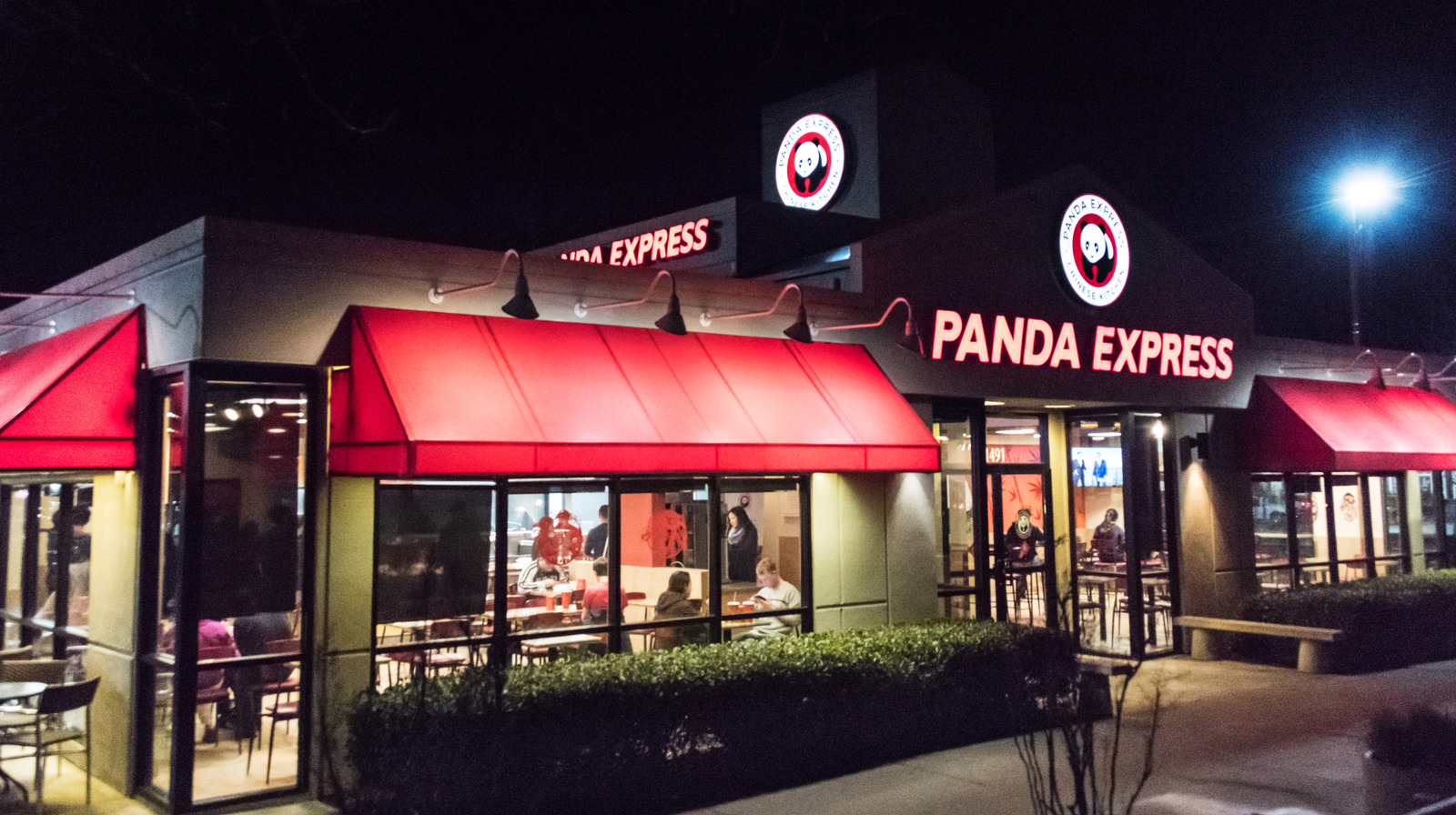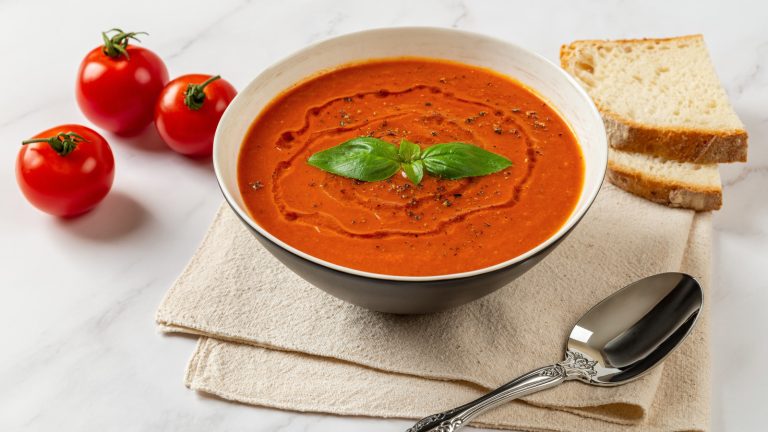Fans of all types of Asian cuisine have undoubtedly heard of (and likely even tried) Panda Express. The fast-casual chain has built its reputation on delivering quick, affordable Asian-inspired meals that satisfy our collective appetite for bold flavors without the wait of traditional sit-down restaurants. Panda Express is a go-to spot for fast and flavorful Chinese-American food, but not all its menu items are created equal.
While Panda Express has several fan favorites that keep customers coming back (such as its orange chicken), its menu also features underwhelming items that just don’t quite hit the spot. After looking at online reviews and the opinions of food experts, we’ve put together a list of Panda Express dishes you might want to skip. From too-sweet sauces to uninspiring sides, these 13 Panda Express items tend to leave customers wishing they’d ordered something else.
Cream Cheese Rangoon
At first glance, these little golden pouches might seem like an easy win among Panda Express appetizers, but the Cream Cheese Rangoon tends to be underwhelming for many customers who are looking for authentic flavor. Despite what its name might suggest, these deep-fried wontons contain only cream cheese even though they traditionally contain crab.
In classic Chinese-American cuisine, crab rangoons are typically hand-made by folding a seasoned mixture of cream cheese, crab meat, and scallions into a wonton wrapper before deep-frying until crisp and golden. Multiple Panda Express employees have explained these are often the least-ordered appetizer, with one employee saying that these rangoons rarely sell enough to warrant fresh batches made to order. The one-note cream cheese filling, lacking the richness of its traditional crab meat inclusion, further disappoints customers. For cheese lovers, there are probably better vehicles for cream cheese than these rangoons.
Honey Walnut Shrimp
This premium-priced Panda Express offering promises a delightful mix of sweet and savory flavors, but the Honey Walnut Shrimp rarely lives up to expectations. This dish is a popular Chinese-American creation, but the fast food version misses the mark on what makes it special. The tempura-battered shrimp is coated in a honey sauce that many find overwhelmingly sweet, lacking the creamy element that typically balances traditional versions. Some customers say the candied walnuts add a pleasant textural contrast but that they’re often too scarce to make a meaningful impact with each bite. Some people also say the shrimps are of low quality and sometimes still have tails.
From a nutritional standpoint, this seafood option doesn’t offer the health benefits you might expect. Packing 360 calories and 24 grams of fat per serving — much of it likely from the deep-fried tempura coating — it delivers surprisingly little protein (just 11 grams) while loading you up with sodium. While passable for a quick mall craving, this dish pales in comparison to the versions served at dedicated restaurants, where the balance of flavors and textures reaches its true potential. For those who love the dish but are disappointed by Panda Express’s execution, making honey walnut shrimp at home is surprisingly doable — just combine freshly fried shrimp with a proper honey glaze and candied walnuts.
Grilled Teriyaki Chicken
Despite its health-conscious appeal on paper, Panda Express’s Grilled Teriyaki Chicken consistently ranks among the chain’s most disappointing options. The dish promises lean protein with a sweet-savory glaze, but numerous customers and critics alike have noted significant issues with this entrée. The primary complaint is around texture — the chicken often has a surprisingly slimy, rubbery consistency that’s at odds with the traditional “velveting” technique essential in authentic Chinese cuisine, where meat is tenderized through a cornstarch and egg white marinade before cooking.
Nutritionally, the dish actually performs well with 275 calories, 33 grams of protein, 14 grams of carbs, and only 10 grams of fat. However, food safety concerns have been raised by restaurant employees themselves. One Panda Express worker revealed that the chopping boards used for the teriyaki chicken aren’t always properly cleaned between orders, potentially leading to cross-contamination with cold, leftover chicken pieces from previous orders. For customers looking for protein options, other menu items deliver better taste experiences while still meeting nutritional goals.
Black Pepper Chicken
At first glance, Panda Express’s Black Pepper Chicken seems to tick all the right boxes — it has lean protein, colorful vegetables, and a savory sauce with a peppery kick. However, this seemingly balanced option frequently misses the mark in terms of flavor balance. The dish’s defining characteristic — its black pepper-forward profile — tends to overwhelm rather than enhance. Many diners report that the aggressive peppery flavor dominates every bite, obscuring the more subtle flavors that should create dimension in the dish. What should be a warming spice accent instead becomes the singular flavor note, leaving little room for chicken or vegetables to contribute meaningfully to the experience.
Texture issues further compound the disappointment. The celery and onions, while adding color, often remain either too crunchy or sadly wilted, depending on how long the dish has been sitting. Meanwhile, the chicken itself can be inconsistent — sometimes tender, but often dry and stringy. Unfortunately, this dish delivers that heat without the complexity and balance that makes great Chinese food so satisfying.
Super Greens
Panda Express’ Super Greens side is a health-conscious alternative to chow mein and fried rice, featuring a blend of kale, cabbage, and broccoli. While this vegetable medley looks promising on the surface — especially for those counting calories or seeking more nutrients — its execution fails to impress most diners.
The most glaring issue with the super greens is their lack of seasoning. The minimal preparation leaves the greens tasting bland at best and actively bitter at worst, particularly when kale dominates the mix. Without the garlicky punch or savory depth that makes Chinese vegetable dishes crave-worthy, the super greens feel more like dietary penance than culinary pleasure. This side also tends to have a texture problem. Customers regularly encounter hard kale stems or undercooked cabbage pieces. While its nutritional profile is fine — low in calories and high in vitamins — the super greens ultimately fail to deliver the satisfaction necessary to make healthy eating sustainable.
Chicken Egg Rolls
The Chicken Egg Roll at Panda Express presents itself with a promising golden-brown exterior. However, this oversized starter frequently disappoints on multiple fronts, making it one of the menu items most consistently passed over by regular patrons. Its large dimensions suggests this could be a main dish component, but the flavor profile and filling-to-wrapper ratio make the egg rolls better suited as a side.
Inside the crispy exterior lies a filling that leaves much to be desired. The chicken, supposedly the star ingredient, often gets lost among the cabbage, carrots, and mushrooms, becoming nearly indistinguishable in both texture and flavor. Customers also report overly mushy interiors that create an unpleasant textural contrast with the crispy exterior. From a nutritional standpoint, these egg rolls deliver a surprisingly poor value. Each roll packs a substantial sodium hit while offering a meager 6 grams of protein. When health experts evaluate them, they tend to flag these as menu items to avoid. For taste, texture, and health considerations, there are simply better options on the Panda Express menu.
Mushroom Chicken
You’d think a dish combining chicken breast, mushrooms, and zucchini would be a winner, but Panda Express’s Mushroom Chicken leaves most diners reaching for other menu options. Despite its modest 220-calorie count, this dish consistently underwhelms where it matters most. The problem starts with the preparation of the vegetables. Instead of hearty zucchini chunks that could stand up to cooking, you get thin, floppy disks that quickly turn soggy. The mushrooms, which should be the star alongside the chicken, often end up having that slippery texture nobody really wants. The ginger soy sauce lacks the aromatic punch you’d expect from Chinese-inspired cuisine, resulting in what many describe as a forgettable eating experience.
What’s particularly misleading is the health halo surrounding this dish. Although it’s low in calories, each serving contains 840 milligrams of sodium — a substantial percentage of the recommended daily portion. If you’re looking to add vegetables to your meal, there are better options that won’t leave your taste buds bored while secretly loading you up with sodium.
SweetFire Chicken Breast
Panda Express’s SweetFire Chicken Breast seems like it should be a hit, with crispy chicken, colorful bell peppers, onions, and pineapple chunks in a sweet chili sauce. This dish draws inspiration from traditional Chinese sweet and sour preparations, which date back centuries and typically balance tangy and sugary tastes. Yet something gets lost between concept and execution. Between the sweet sauce and pineapple chunks, the sweetness overwhelms rather than complements.
Its texture doesn’t help matters either. What starts as crispy chicken quickly becomes soggy under the heavy sauce, creating a dish that feels like an afterthought rather than something carefully developed. In authentic Chinese cooking, the proteins would remain crispy through quick, high-heat wok cooking. If you’re craving something sweet and savory, you might want to just go for Panda’s more popular orange chicken instead.
Fried Rice
Ask anyone what they typically order at Panda Express, and fried rice often tops the list. Yet this seemingly safe choice carries some surprising disappointments that might make you reconsider next time. For a dish that should deliver savory satisfaction, Panda Express’s version often lacks the depth and aromatic qualities that make great fried rice cravable. Many diners find it bland, even as a side.
The scattered vegetables — some peas, carrots, and green onions — contribute color more than flavor, while the rice itself often lacks that slightly smoky wok hei that elevates proper fried rice. Nutritionally, it’s a heavyweight contender you might not have expected. At 520 calories per serving as a side portion, it packs 850 milligrams of sodium and 85 grams of carbs. While not terrible in a pinch, customers find it a bit too basic and think the flavor payoff simply doesn’t justify the nutritional impact.
Black Pepper Angus Steak
You’d think paying extra for the “premium” Black Pepper Angus Steak would guarantee a memorable meal, but many customers leave wondering where their money went. This upscale offering — featuring Angus beef with bell peppers, onions, and mushrooms in a garlic black pepper sauce — sounds promising, until it arrives at your table.
The “Wok Smart” designation (indicating dishes with under 300 calories and at least 8 grams of protein) might appeal to the health-conscious, but many customers mention the dish seems to be mostly vegetables with occasional bites of steak. When you do find the beef, it’s often described as disappointingly stringy and tough rather than tender. To be fair, the black pepper sauce itself has fans. It delivers a nice garlic punch with noticeable black pepper flavor — it’s just not necessarily coating much actual steak.
Beijing Beef
This combination of fried beef strips with bell peppers and onions in sweet, tangy sauce consistently scores low in customer rankings — and for good reason. The beef itself presents the first hurdle. Unlike the chain’s popular chicken dishes, the beef strips often end up tough and chewy. The frying technique, which requires precision, frequently seems to miss the mark.
Then there’s the sauce — a sticky-sweet coating that lacks complexity or depth. In authentic preparations, this sauce would include balanced notes of vinegar, ginger, and garlic. This one-dimensional sweetness quickly becomes overwhelming, especially when paired with the already challenging texture. Even the vegetables don’t quite work. The bell peppers add little flavor interest, while many diners complain about disproportionately large onion chunks that dominate each bite.
Chow Mein
Ask ten Panda Express regulars about the chow mein and you’ll likely get ten different opinions. Chow mein, meaning “stir-fried noodles” in Cantonese, originated in China and traditionally features hand-pulled wheat noodles quickly tossed in a wok. At Panda, this staple side — featuring wheat noodles stir-fried with onions, celery, and cabbage — seems to vary wildly in quality.
The texture inconsistency ranks among the top complaints. Sometimes the noodles have that perfect chew, while other visits might yield either undercooked firmness or oil-soaked sogginess. Many long-time customers have noticed that there often tends to be more vegetables than noodles. Flavor profiles vary dramatically by location. Some describe the noodles as buttery and satisfying, while others find them bland and forgettable.
Honey Sesame Chicken Breast
The Honey Sesame Chicken Breast at Panda Express disappoints in both taste and nutrition. Most notably, the chicken itself tends to be dry, often seeming overcooked compared to other chicken options on the menu. Its flavor profile also presents significant issues. The honey sauce is excessively sweet, while bell peppers add even more sweetness without providing necessary contrast. Though sesame adds an earthy element, it’s not enough to balance the dish. Bitter green beans clash with the sweet sauce rather than complementing it, creating a disjointed eating experience.
From a nutritional standpoint, each serving contains 340 calories and 35 carbs. The ingredient list also includes caramel coloring, which some studies have linked to health concerns. Unlike other chicken dishes at Panda Express that feature clear, cohesive flavor profiles, the Honey Sesame Chicken Breast lacks a distinct identity. While its sesame elements show potential, they’re currently insufficient to unify the dish into something truly satisfying.





